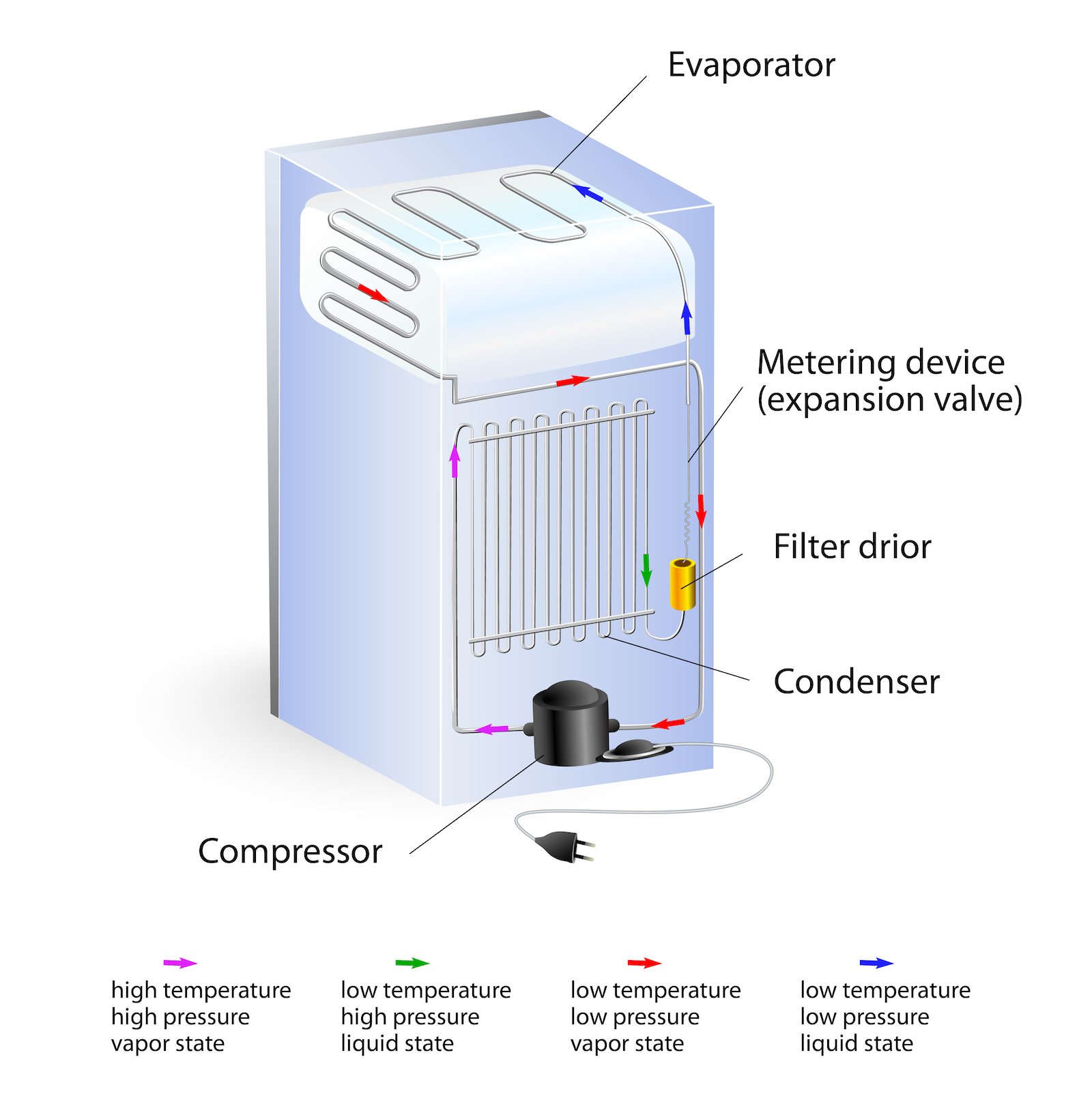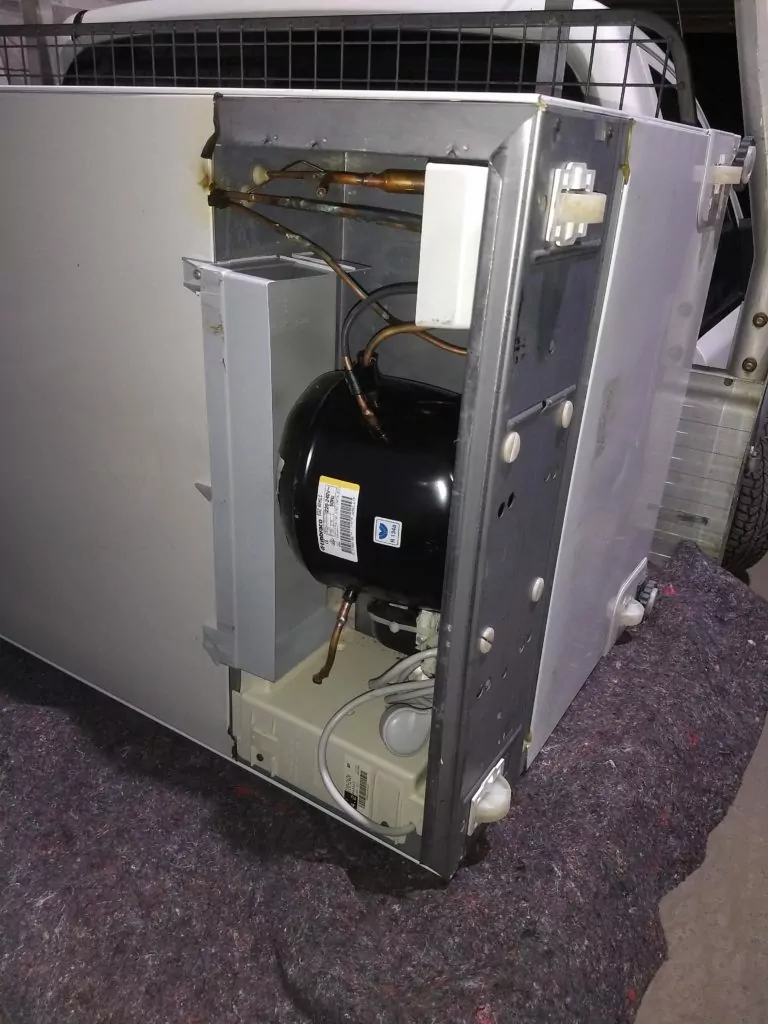Yes, it is generally okay to lay a freezer on its side, but it should be done carefully to prevent damage. When transporting a freezer, it may need to be laid on its side for a short period.
However, it is best to keep it upright to avoid potential issues with the compressor and system components. Freezers should be left upright for at least 24 hours before plugging in to allow the refrigerant and oil to settle. It’s also important to secure the door during transportation to prevent it from swinging open and getting damaged.
Following these guidelines will help ensure that laying a freezer on its side does not cause any problems.
Introduction To Freezer Transportation
Transporting a freezer can be a daunting task, especially when it comes to deciding on the proper position to lay it. Many people wonder if it is okay to lay a freezer on its side, and the answer is both simple and crucial to the appliance’s functionality.
The position in which a freezer is placed during transportation can greatly impact its performance. Freezers contain a compressor that relies on oil to function properly. When a freezer is laid on its side, the oil may flow into the cooling lines, causing potential damage and inhibiting the freezer’s ability to cool effectively.
Common Misconceptions
There are a few common misconceptions when it comes to laying a freezer on its side. Some believe that as long as the freezer is left upright for a period of time before plugging it in, there will be no issues. However, it is important to note that even a short duration on its side can cause damage to the compressor.

Credit: blog.puls.com
The Science Behind Freezer Orientation
Laying a freezer on its side can have negative effects on its performance due to potential oil leakage and compressor damage. It is recommended to keep the freezer upright to ensure proper functioning and avoid any issues.
When it comes to laying a freezer on its side, understanding the science behind it is crucial. One important factor to consider is the coolant flow and its effects. Coolant, also known as refrigerant, is responsible for absorbing heat from inside the freezer and releasing it outside. If a freezer is laid on its side, the coolant can potentially flow into the compressor, which can cause damage.
The compressor is a vital component that pressurizes the coolant, allowing it to absorb heat effectively. When the compressor is impacted, its ability to function optimally is compromised. This can lead to reduced cooling efficiency and potential breakdowns in the future.
Therefore, it is generally not recommended to lay a freezer on its side. To ensure proper functioning and longevity of your freezer, it is best to keep it upright at all times.
Risks Of Laying A Freezer On Its Side
Laying a freezer on its side can pose risks such as potential leaks and compressor damage. When a freezer is laid on its side, the oil within the compressor can flow into the cooling lines, leading to potential leaks.
This can result in decreased cooling efficiency and potential damage to the compressor. Additionally, when the freezer is turned back upright, the oil may not flow back to its original place, further increasing the risk of compressor damage.
It is important to consult the manufacturer’s guidelines before repositioning a freezer, and if necessary, seek professional assistance to minimize the risks associated with laying a freezer on its side.

Credit: www.whybuy.com.au
Debunking Popular Myths
Laying a freezer on its side is a popular myth, but it’s not recommended. This can cause damage to the appliance and affect its performance. It’s best to keep the freezer upright to ensure it functions properly and maintains the right temperature.
| Myth | Fact |
|---|---|
| Quick Recovery Posture Myth | It is a myth that laying a freezer on its side for a short period of time can cause damage to the appliance or affect its performance. In fact, most manufacturers recommend transporting freezers on their sides to prevent damage to the compressor. |
| No Harm Done Myth | It is also a myth that laying a freezer on its side for an extended period of time will cause irreparable damage. While it is true that the oil in the compressor can move to the wrong parts of the system, causing it to malfunction, this can be fixed by simply returning the freezer to an upright position and allowing it to settle for a few hours before plugging it in. |
It is common to believe that laying a freezer on its side can cause damage to the appliance or affect its performance. However, this is not true. Most manufacturers recommend transporting freezers on their sides to prevent damage to the compressor.
It is also a myth that laying a freezer on its side for an extended period of time will cause irreparable damage.
While the oil in the compressor can move to the wrong parts of the system, causing it to malfunction, this can be fixed by simply returning the freezer to an upright position and allowing it to settle for a few hours before plugging it in.
So, it is perfectly ok to lay a freezer on its side for a short period of time without causing any harm to the appliance.
Safe Transport Tips For Freezers
When transporting a freezer, it’s important to take certain precautions to ensure it arrives at its destination in good condition. Freezers can be transported on their sides, but it is recommended to keep them upright if possible.
If you must lay the freezer on its side, make sure it’s secured and remains upright during transport. This will prevent any oil from leaking into the refrigeration system, which could cause damage.
| Recommended Positions | Securing for Transit |
|---|---|
| Upright | Use straps to secure the freezer to prevent it from tipping over. |
| Sideways | Place the freezer on a sturdy, flat surface and secure it with straps to prevent it from sliding around. |
| Upside Down | Avoid laying the freezer upside down, as this can cause damage to the compressor. |
What To Do If You Must Lay It On Its Side
| Is It Ok to Lay a Freezer on Its Side | |
|---|---|
| Heading: | What to Do If You Must Lay It on Its Side |
| Subheading: | Precautions to Take |
|
If you must lay a freezer on its side, there are some precautions you should take to ensure that it remains in good condition. First, it’s important to let the freezer sit upright for at least 24 hours before plugging it in and turning it on. This allows the refrigerant to settle back into place and prevents damage to the compressor. Second, make sure that the freezer is securely strapped or wedged in place during transport to prevent it from moving around and causing damage to the internal components. Once the freezer has been transported and is ready to be used again, it’s important to clean it thoroughly before turning it on. This includes wiping down the interior with a mild detergent and water solution and allowing it to dry completely. Finally, it’s a good idea to monitor the freezer closely for the first few days after turning it back on to ensure that it is functioning properly. | |
Long-term Effects Of Improper Transportation
Improper transportation of a freezer, such as laying it on its side, can have long-term effects on its performance.
This can lead to damage to the compressor and other internal components, affecting its cooling abilities and overall lifespan. It is important to follow the manufacturer’s instructions for proper transportation to avoid any potential issues.
| Is It Ok to Lay a Freezer on Its Side | |
|---|---|
| Laying a freezer on its side during transportation can cause wear and tear on the appliance. The compressor is the most important part of the freezer and it contains oil that lubricates its components. When the freezer is laid on its side, the oil can leak into the coolant lines, which can cause the compressor to malfunction. This can lead to a decrease in efficiency and even permanent damage to the freezer. | |
| Wear and Tear | When a freezer is laid on its side, the components are subjected to unnecessary stress. This can cause damage to the compressor, which can lead to other parts of the freezer malfunctioning. The motor and other parts can become damaged as well, which can cause the freezer to stop working altogether. |
| Impact on Efficiency | If a freezer has been laid on its side during transportation, it can lead to a decrease in efficiency. The compressor will have to work harder to keep the freezer cold, which can lead to higher energy bills. Additionally, the freezer may not be able to maintain a consistent temperature, which can lead to freezer burn and spoilage of food. |
FAQs to Lay a Freezer on Its Side
How Long Can A Freezer Lay On Its Side?
A freezer can lay on its side for up to 24 hours. It should be returned to an upright position before plugging it in. Laying it on its side for longer can damage the compressor.
Why Can’t You Transport A Freezer On Its Side?
Transporting a freezer on its side can damage the compressor. The oil may leak, causing malfunctions.
Is It Okay To Transport A Refrigerator Laying Down?
Yes, it’s generally okay to transport a refrigerator laying down, but it’s best to keep it upright. If laying it down, wait a few hours before plugging it in. This allows the refrigerant to settle and prevents potential damage.
Which Side Is The Compressor Side Of A Freezer?
The compressor side of a freezer is typically located at the back of the appliance. It’s where the compressor motor and condenser coils are usually positioned.
Conclusion
Laying a freezer on its side can cause damage to the compressor and lead to potential issues. It’s best to follow the manufacturer’s guidelines to maintain the appliance’s efficiency and lifespan. Always prioritize safety and consult the manual for specific instructions on transporting and positioning your freezer.

